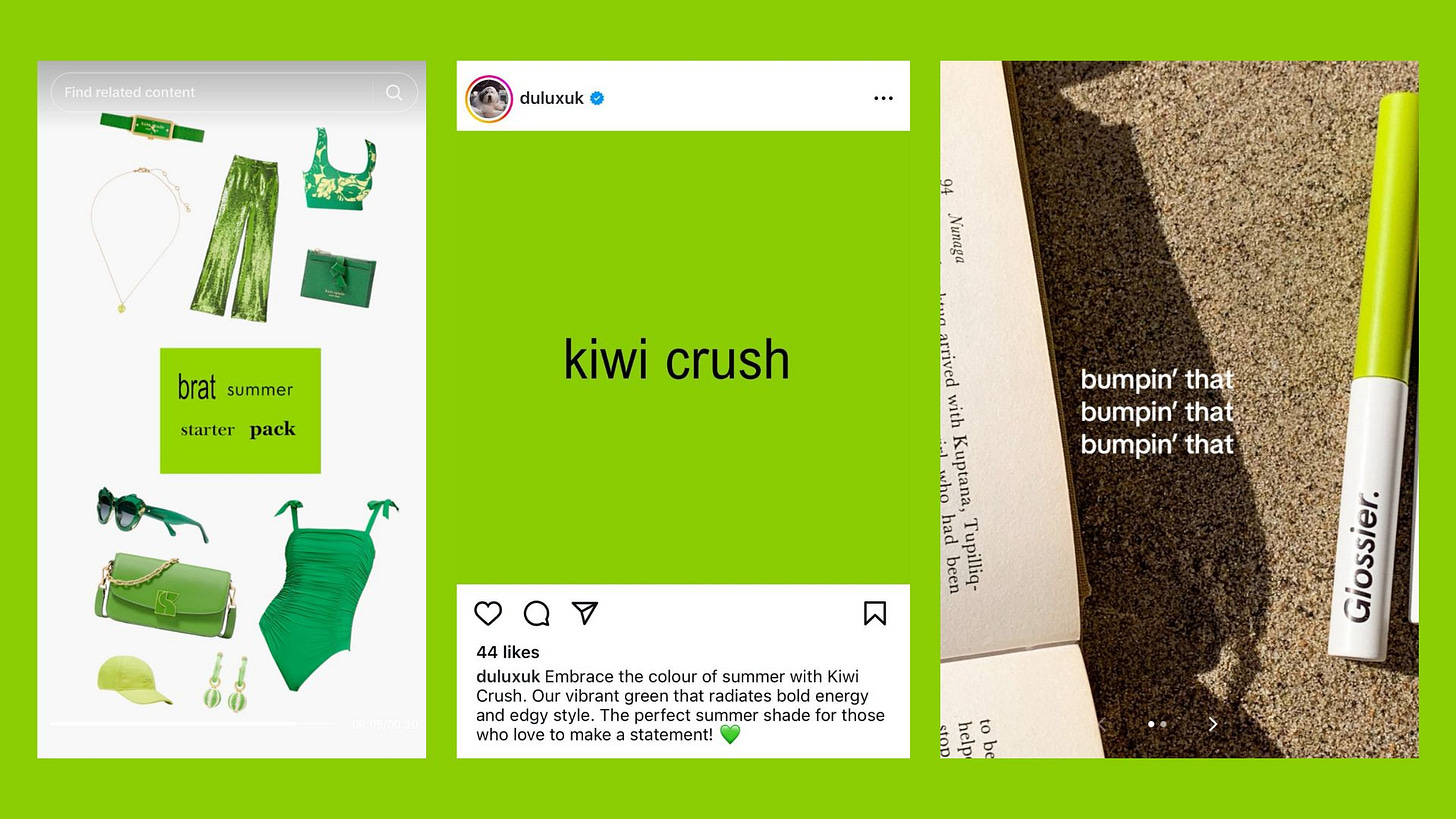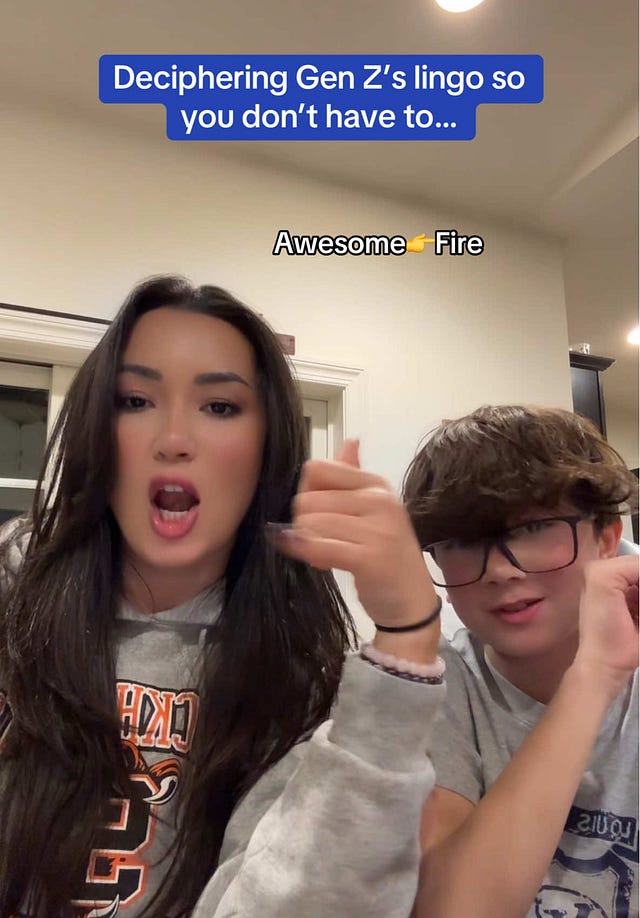Brat. Brainrot. Manifest. Enshittification. Every year a handful of words saturate timelines, brand campaigns and the occasional boardroom. They hit critical mass because they hit a collective nerve – speaking to the overstimulated, underslept, unhinged moment we’re in. What we laughed, cried, cared and (over)thought about.
For brands, this kind of trending language is both an opportunity and a minefield. So in this season of wraps and ‘words of the year’, we’re asking: what makes phrases stick? And how can you adopt this break-neck lexicon without losing yourself in the noise?
A tale as old as language
Here’s the thing about words (and a little trivia to dish out over the holidays): no matter how many style guides, tone of voice PDFs, or glossaries you throw at them, language can’t be pinned down. It’s always evolving because we are too.
A viral moment, a cultural shift, a single joke can change how we communicate. In the 1830s, ‘OK’ started as a joke (‘oll korrect’) in a Boston newspaper and spread like wildfire. ‘Cool’ came out of 1940s African American jazz circles. ‘Catch-22’ from Joseph Heller’s 1961 novel. ‘Spam’ became slang for junk mail all because of Monty Python.
More recently, the pandemic turned Zoom from brand to verb, and ‘unprecedented times’ into common parlance… then a punchline. In 2015 we daters were getting ‘ghosted’, now it’s all about ‘orbiting’ – when they leave your texts on read but like your stories and send memes. CONFUSING!
So, why’s that a problem for brands?
If you’ve spent five minutes in marketing, you’ll know the gist of this David Ogilvy quote:
“If you’re trying to persuade people to do something, or buy something, it seems to me you should use their language, the language in which they think.”
Great! Brands should mirror how customers speak and hop on every buzzy phrase, right? Wrong.
Here’s where it gets tricky: broad linguistic trends have got confused with viral phrases and soundbites like ‘it’s giving’ or ‘no notes’. ICYMI: the internet hurried the adoption of new words, and now social has sent the speed of language into overdrive. (More trivia: we consume about 100,000 words every day – a medieval person might have encountered about 1,000 or far less, depending on literacy and social context.)
And the line between culturally relevant and cringe? Paper thin.
All talk, no brat
Back in summer, we wrote about brands paying lip service to ‘brat’ without living up to the 365 party girl, DIY behaviour. And that’s the problem with chasing and copy-pasting viral language. You’re talking like the internet, but do you mean it?
Trending words might be good for short-term social hits, but great brands aren’t built on quick-win likes alone. Being reactive doesn’t make you culturally relevant. It starts a few steps back: with a unified, strategic positioning, backed by clear values, brought to life by a distinct personality. Treat your tone of voice like a real-life conversation with your customer:
Listen first. What matters to them?
Be intentional. What matters to you as a brand?
Be clear. What role do you play in their lives?
When you know your voice, it’s easy to pick up the new words and neologisms that fit, fast – and leave the rest behind. That’s why Nike would never say ‘brainrot’. But Duolingo? Absolutely. Its mildly bullying, chaotic persona was built for trolling a zillennial audience that gets it.
Oxford Dictionary round-ups will come and go, but the best brands stay on top of language because they know who they are, what they stand for and how to connect with their audience – no matter the buzzword of the day.
Want to build a voice that’s yours?
Words of 2025???
Here’s a handful of our predictions. Tell us yours.
AInfluencer (noun)
/ˈāˌinflüənsər/
AI-generated influencers like ‘digital muse’ Aitana Lopez, 20-something South African model Shudu, and Lil Miquela, who interviewed artists at Coachella, partnered with BMW and raked in $10m in 2023.
*See also: ‘AIethics’ and ‘chaos curators’ – most likely real people thriving on unhinged but highly curated memes, obscure videos and random internet relics.
Polywork (noun)
/ˈpälēˌwərk/
The practice of juggling multiple careers, projects, income streams, podcasts, Etsy stores, etc.
Feral office (noun)
/ˈferəl ˈôfis/
The chaos of in-person work after getting comfortable WFH. Think awkward eye contact and sitting positions, and no HDMI cables for the big screen. Also the joy of lunch together!
Contentpocalypse (noun)
/kənˈtent-ˈpäkəˌlips/
The moment an overwhelming volume of content blurs into indistinguishable noise. “The contentpocalypse is real – I can’t tell brands apart anymore, they’re all memes.”
Shower Thoughts Industrial Complex (noun)
/ˈshou(-ə)r ˌthots inˈdəstrēəl ˈkämˌpleks/
The phantasmic space where our brains retreat post-doomscrolling. The endless recycling of over-philosophized observations masquerading as deep questions like “why does no one ever see baby pigeons?” and “if tomatoes are fruit, is ketchup a smoothie?” Kind of interesting, totally useless. No shower required.
The Quote
"The limits of my language are the limits of my world."
— Ludwig Wittgenstein
The Vortex
Has anyone ever actually, unintentionally slipped on a banana peel?
The dictionaries have been sharing their words of the year: brainrot (OUP), brat (Collins), manifest (Cambridge), polarisation (Merriam-Webster), and enshittification (Macquarie). Honourable mentions go to: boujee, bussin, disconnect, drip, extra, raw-dogging, rent-free, salty, shook, and vibe check.
Expanding language, neologisms and the precedented history of ‘unprecedented times’.










I love words, and I love this.